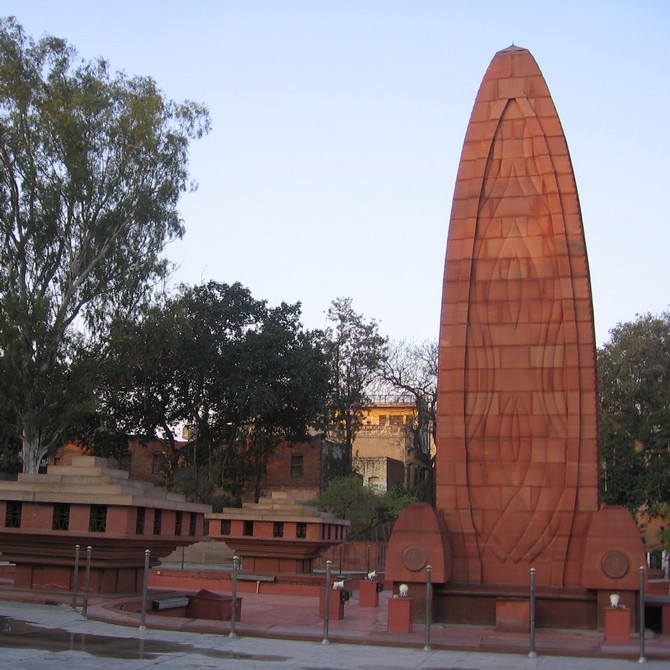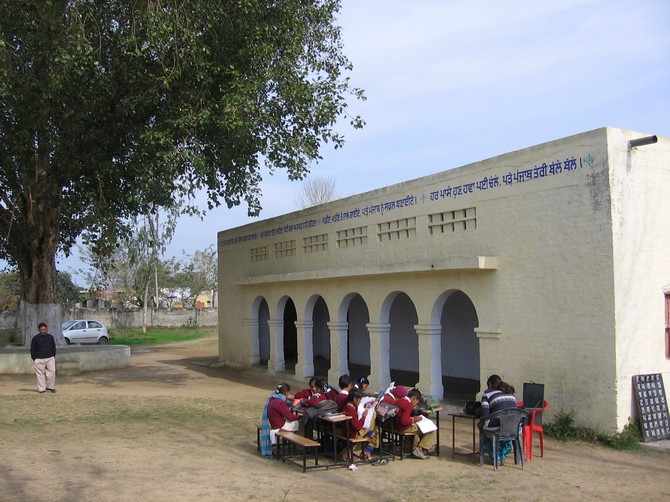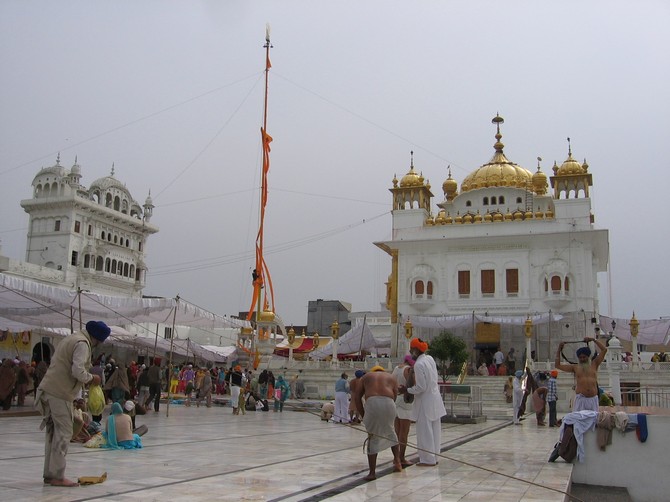Photographs: Deepak Kirpalani Deepak Kirpalani
Follow Deepak Kirpalani as he travels through Punjab. Here he writes about his trip to the Jallianwala Bagh. This is part four of his travelogue.
Read part one here: Five Days and 1406 km through Punjab
Part two here: In the city of the magician
Part three here: Finding bliss in Amritsar
Part five here: Stories of valour and sacrifice
Baisakhi marks the New Year in Punjab. On this day in 1919 the Jallianwala Bagh Massacre took place in which hundreds of unarmed people were killed or injured in a firing by British Indian Army soldiers. Jallianwala Bagh is a plot is surrounded by buildings on all sides with access restricted to a narrow path that was blocked by the soldiers. Scores of bodies were found in a well that people jumped into, to escape the firing.
Bullet holes in the wall bear testimony to the gruesome incident. We began the day at seven with a visit as the memorial down the street from the Golden Temple opened for the day. A monument stands in the centre of the park with a jogging track along the perimeter.
Also read
1406 km through Punjab: A pilgrimage of another kind
Image: The Golden Temple dazzles in the sunPhotographs: Deepak Kirpalani
The Golden Temple dazzled in the sun. It was one of those rare moments during the trip when the sky was clear. More blessings were in store as we made our way to the sanctum sanctorum. As I rose from prostrating in the presence of the Guru Granth Sahib, the attendant gave me an orange saropa. I couldn't believe that I was the chosen one! The sublime joy of having received without expectation lingered for a long time.
On our way out of the city we stopped at one of those run down eateries that subscribe to the belief that cleanliness is inversely proportional to taste. The breakfast of chole bature and milk was so good that we surprised the proprietor who brought the food to our table by tipping him. Of course he caught on in a moment and smiled as we made our way out.
1406 km through Punjab: A pilgrimage of another kind
Image: The local primary school where Rafi studied till class fourPhotographs: Deepak Kirpalani
The trip to Punjab would have been incomplete without embarking on a pilgrimage of a different nature. To the birthplace of a man whose conduct was as saintly as his singing, divine. In a career that spanned over 36 years, Mohammad Rafi sang his heart out in 5000 songs.
For a long time I was given to understand that Kotla Sultan Singh was in Pakistan. Fortunately not! It is the fourth village to the east after crossing Majitha, about 24 km north of Amritsar.
The first man we met directed us to Gurbir Singh Samra standing in a group across the road. Gurbir is a teacher at the local primary school where Rafi studied till class four. We visited his classroom and the library that displays a chart on the school's most well-known alumnus.
The Samra residence stands on the plot where Rafi's house once stood. Rafi moved to Lahore in 1935/36 and post-1947, the Samra family who lived next door, acquired the house and subsequently redeveloped the extended property.
Apparently houses were mud structures at that time (as Gurbir pointed out to some that still stand) and concrete was used much later (perhaps in the 1970s).
We were touched by the hospitality extended to unknown and unannounced visitors that we were. Gurbir refused to let us go without eating parathas with home-made butter, black dal, kheer, lassi and tea. Quite a meal considering that we had eaten breakfast an hour earlier. As they say, when in Rome...!
The visit turned out to be an insight to life in a village. Nothing is hurried. Work and the community are within easy distance. Special requirements demand travel to the city. There are farms and cattle to tend. As in a city, hard work is necessary to acquire a comfortable living. Having earlier been to Rafi's house in Mumbai and his grave, the visit to his village completed the circuit for me.
1406 km through Punjab: A pilgrimage of another kind
Image: Sri Darbar Sahib at Tarn TaranPhotographs: Deepak Kirpalani
Driving south past Amritsar, we visited Tarn Taran and Goindwal. Built by Guru Arjan Dev, Sri Darbar Sahib at Tarn Taran has the largest sarovar (roughly 230m x 285m) attached to a gurudwara anywhere. The pond that became the sarovar was known as Dukh Nivaran for the medicinal properties it was found to possess.
The town took the name Tarn Taran (the boat that ferries across the ocean of existence) from the sarovar that was thus named. As at the Golden Temple, an impressive collection of paintings depicting Sikh history is on display at the gallery a level below the courtyard of the gurudwara.
Statues of birds, aeroplanes and footballs atop terraces of houses seem to be popular in the region around Amritsar. We came across quite a few as drove past wheat and mustard fields to Goindwal 23 km to the east. Founded by the third Guru, Amar Das, Goindwal -- the first centre of Sikhism -- marks the spot where the ancient east-west highway crossed the river Beas. The Guru met his future son-in-law and successor Guru Ram Das here.
Sri Baoli Sahib, the well with 84 steps leading to the water level is located besides the main gurudwara, Sri Goindwal Sahib. A short distance away is Gurudwara Sri Chubara Sahib where we came across Nihal Singh. The Sikh tradition of service manifested itself one more time. Nihal Singh, presumably attached to the gurudwara, spent half an hour patiently explaining the origin of Sikhism and taking us through the rooms built around the courtyard in which the gurudwara is located.
The gurudwara complex was the residence of Guru Amar Das. A wooden peg (now covered with a silver sheath) in the wall was used by the Guru as a support while meditating. Guru Ram Das was anointed Guru in one of the rooms here.
Another room marks the spot where Guru Amar Das cast away his body on 1 September 1574.
The fourth Guru passed on at the same spot exactly seven years later. The fifth Guru, Arjan Dev was born in another room. He received the hymns for compiling the Adi Granth from his maternal uncle, Baba Mohan here. Baba Mohan lived in an upstairs room. Thanks to Nihal Singh, the place came alive as he shared with us these moments from the lives of the Gurus.
Travelling south-west for an hour brought us to the Harike Barrage from where the confluence of the Beas and the Satluj a few hundred metres upstream is clearly visible. The highway leading south runs over the barrage which diverts the waters to a canal that flows south to Rajasthan. It is a serene and soothing sight. Built in 1953, the barrage created an artificial wetland, the largest in north India. Spread over 41 sq km, the wetland is home to a wide variety of flora and fauna. It was a pleasant end to a busy day.





Comment
article